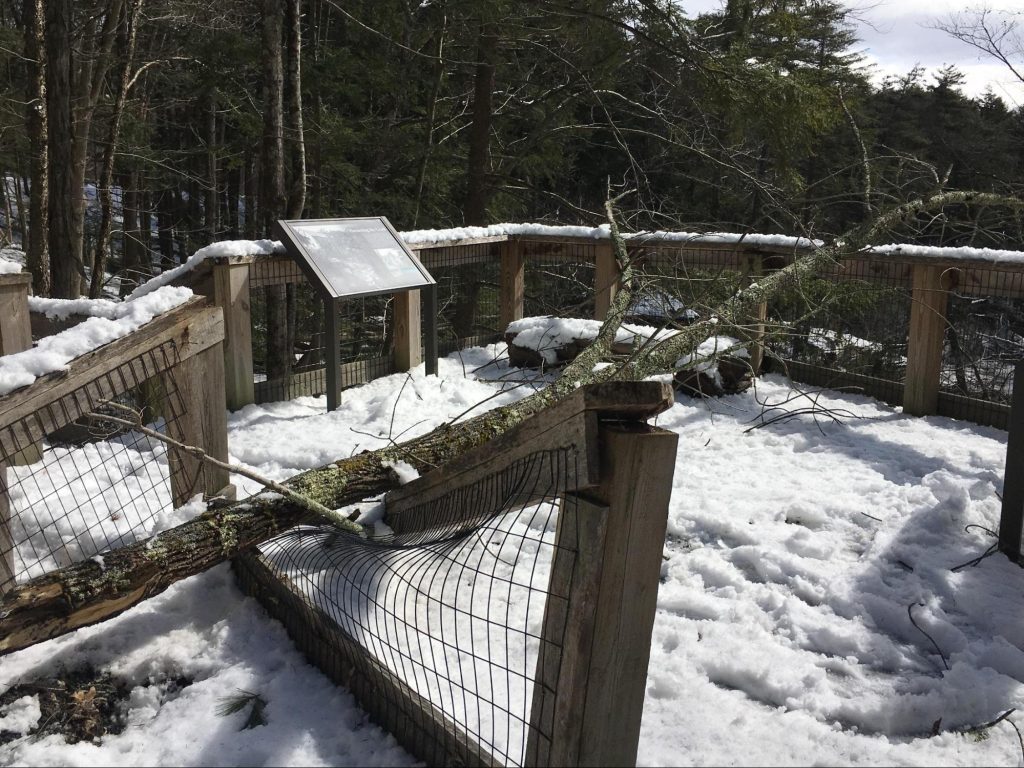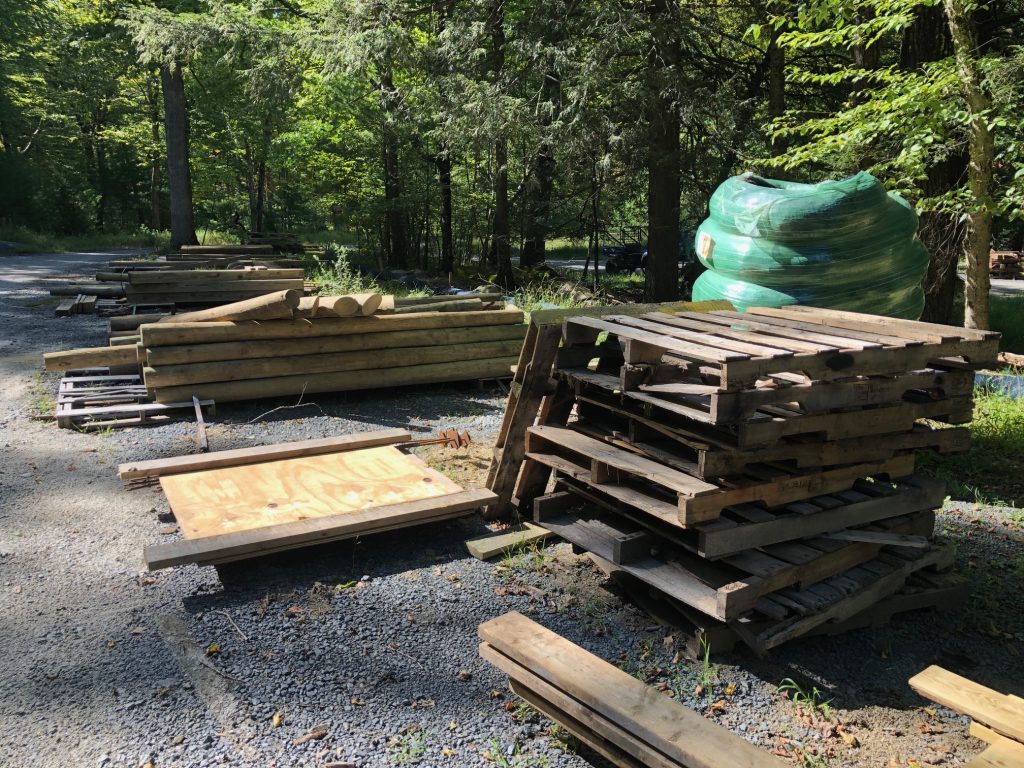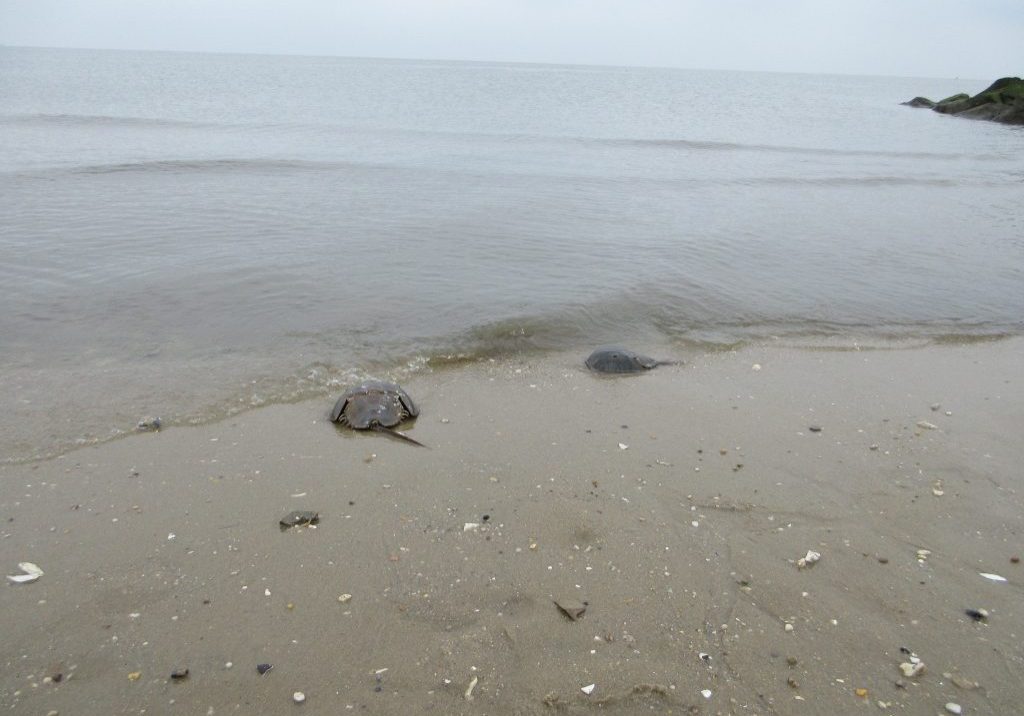
Childs Park reopening eyed for 2024 after yearslong closure for repairs
| September 23, 2023
A tour through George W. Childs Park in the Delaware Water Gap National Recreation Area in Pike County, Pa., reveals a park in transition.
Tables covered in leaves or moss sit abandoned, frozen in time and awaiting picnickers. On stairs and observation platforms, some wooden boards have yawning gaps, the deterioration the result of unfulfilled maintenance. And the entrance to the park is lined with yellow tape to keep out visitors and the curious.
But there are also signs of improvements: Some new stair railings have been installed. Blonde new floor boards starkly contrast with grayed, fading ones, and a large section of a trail has been paved with asphalt to improve accessibility.

After destructive back-to-back winter storms unleashed widespread havoc on Childs Park in March 2018 and forced its closure, the National Park Service is finishing nearly $3 million in repairs and hopes to re-open it in the spring or summer of 2024.
The storms brought powerful winds, heavy snow and ice that toppled thousands of trees, which, in turn, caused entire hillsides to come undone. Fallen trees crushed trail bridges, choked Dingmans Creek and the waterfalls and heavily damaged Civilian Conservation Corps-era historic buildings and other structures, including stairs, railings and observation platforms.
“It really came down the ravines that are northeast-facing and really took them down like matchsticks,” Kara Deutsch, the recreation area’s resource management and science division manager, said of the trees. “You couldn’t even believe how many were down.”
“It was pretty devastating,” she added.

Fallen hemlocks
By the time NPS officials led a press tour of the 155-acre park on Thursday, work crews had finished for the day. Stacks of palettes, planks and poles filled the parking lot, awaiting the workers’ return.

The pungent aroma of mulch in large blue tubes used for erosion control lining the trail blended with the sweet smell of hay that was spread to retain moisture in the soil. The sun danced among the leaves, creating a crazy-quilt pattern of shadows.
Photos of the storms’ aftermath supplied by the Park Service show jagged-edged remains of trees dotting the landscape. In other places, upturned roots extended horizontally, like outstretched tentacles.
Many of the toppled trees were mature with full canopies. Among them were 200-year-old hemlocks, according to Deutsch. More heartbreaking still was that the Park Service had been taking measures to protect those trees against the woolly adelgid, an invasive insect that attacks hemlocks, she said.
By the time Childs Park reopens, it will have been closed for more than six years. Officials said the lengthy closure was not so much the result of the pandemic and supply chain issues as it was related to securing needed funding and the bidding process to secure contractors.
“A great deal of work has gone into this important restoration project over the past few years, both on the ground and behind the scenes,” said Bill Tagye, chief of facility management, and project manager for the restoration work. “When the site re-opens, the trail will be a little different than people remember it in some places, but it will be just as beautiful as it was before, and it will also be more accessible and more sustainable.”
Roots dating to 1892
The park features three scenic waterfalls surrounded by a trail system that threads through a cool, shady eastern hemlock ravine. Its accessibility and natural beauty make it popular, luring about 30,000 visitors a year.
It was the brainchild of a wealthy Philadelphia philanthropist and publisher, George W. Childs who, along with friend George Donaldson, developed rustic trails and dedicated it to the public in 1892 as a place for people to enjoy nature.
Childs died in 1894 and his widow donated the site to Pennsylvania in 1912. It was operated as a state park until 1983, when it was donated to the Park Service. Once upon a time, the park allowed overnight camping, but that practice was discontinued in the 1930s.

Civilian Conservation Corps-constructed structures
While under state park ownership, military veterans serving in the Civilian Conservation Corps at the nearby Edgemere camp constructed numerous structures, including the timber Ranger Cabin complex in 1935.
They also constructed picnic pavilions and pump shelters, improved trails and planted native vegetation including hemlock trees.
This year, a team of professional wood-crafting experts from the NPS Historic Preservation Training Center repaired severe damage to the Ranger Cabin caused by the storms to stabilize the historic CCC-constructed building.
According to the Park Service, work in this final phase of restoration will include:
- Paving a portion of the existing trail and minimizing the slope from the parking area to the Woolen Mill sign exhibit to improve accessibility and drainage.
- Installing a new accessible section of trail from the first bridge to the historic handpump shelter.
- Removing an unsustainable stretch of trail between the second and third bridge on the west side of Dingmans Creek.
- Repairing damage or replacing components of the trail, bridges, picnic sites, boardwalk, stairs, overlook areas, interpretive exhibits and trail guardrails throughout the site.
- Installing a trail and stair retaining system near the fourth bridge.









Excellent article and information. I’ve really missed Child’s Park and look forward to seeing it again.
Loved this article, can’t wait to hear a reopening date! Child’s Park is a beautiful place, filled with many family memories and we are anxious to be back.